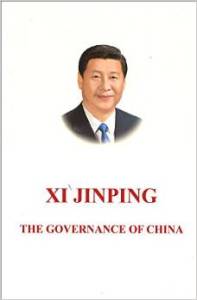Posted: January 16th, 2015 | No Comments »
Having just spent some time in North Africa I’m sort of interested, but completely lacking in knowledge, about the history of Chinese in the region in the 1930s and during WW2. It is actually the case that there may not be any history beyond the movies….it may just be that Chinese were incorporated into films about the area at the time to add a little Orientalist mystery…
In Casablanca (1942) Rick (Bogart) sits in the casino portion of Rick’s and alongside him sit two smart modern Chinese women in swank dresses and furs gambling and smoking….
In Pepe Le Moko (1937), Jules Duvivier’s masterpiece about a French criminal (Gabin) trapped in the Algiers kasbah a short intro to the mysteries of the kasbah at the start notes the strange groups that inhabit this netherworld including “Les Chinois”….
Yet I can find no references to the Chinese in Algeria, Morocco or Tunisia during the 1930s or during WW2 (with the exception of Chinese-Vietnamese-French Monsieur D. mentioned in Peter Mayne’s A Year in Marrakesh during the 1950s) …..Any one got anything?????
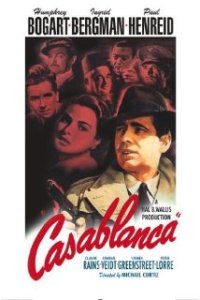
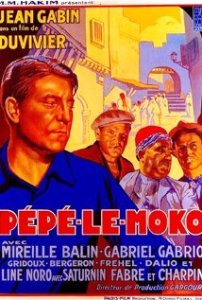

Posted: January 15th, 2015 | No Comments »
I blogged late last year on the long running battle to try and save the old French colonial Grand Magasin Charner department store building in Saigon (later and better known now as the Saigon Tax Trade Centre). After public protests some of the original building and its features may now be saved. Now news comes of another “win” hopefully, due to public pressure, in Saigon – the redecoration of the Central Post Office. In September last year the Vietnam Post and Telecommunications Group, which controls the old post office, started a refurbishment. Generally this was welcomed and good – US$235,000 earmarked for restoration, repairs to the leaking roof and replacement of cracked and broken plaster. However, they then started painting the building – a gaudy yellow! This has outraged many and now, after protests, the painting has stopped. Protestors claimed that the bright yellow did not reflect the buildings original patina. Now the decorators will consult with experts on a more suitable colour.
One problem is that sadly the Central Post Office has not yet been declared a national monument. This is odd as the neoclassical structure dates back to 1886 (opening in 1891) and the architect was none other than Gustave Eiffel. the building is currently on a list of structures to be declared national monuments including the Ben Thanh Market and the former Cercle des Officiers (which is also under threat – see this blog post).

the Post Office shortly after completion
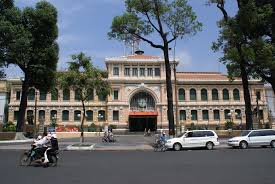
The Post Office until quite recently
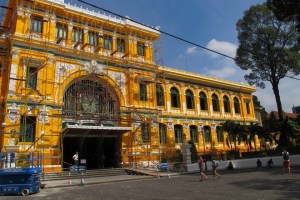
the rather unpleasant yellow paint job underway

And now under wraps!
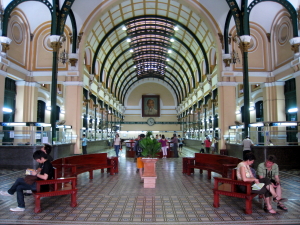
the beautiful lobby
Posted: January 14th, 2015 | No Comments »
Talking about Vladivostok’s old Chinatown badlands, Millionka, yesterday I thought I’d post briefly on another interesting old Chinatown in Russia, Murmansk’s “Shanghai” district. Murmansk only dates back really to around the time of WW1 (access to supplies from the allies and a train line to St. Petersburg) and some Chinese went there as labourers during the Great War. The town was important obviously as a port on the arctic circle and provided access for men, food and materiel during the war. Like Millionka, Shanghai was a rough area where Chinese bar owners sold a home-brewed drink known as “hanzha†and organized card games as well as, of course, sold a bit of opium. Apparently many a drunk ended up “Shanghai-ed” the next day on a boat. Sorry, don’t know much else about Shanghai, Murmansk….and I’ve got no photos of the district either I’m afraid…
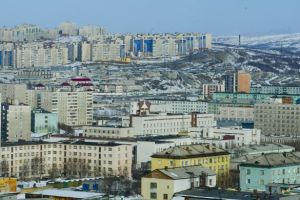
Murmansk…today
Posted: January 13th, 2015 | 1 Comment »
“Millionka†(in Russian: Миллионка) was the common name for the “Chinatown” that grew up in the nineteenth century in the Russian Far East city of Vladivostok – around the time of the end of the First World War some reports say that 30% of Vladivostok’s population was Chinese. Nowadays this district, near the port and where once Chinese and Korean junks moored, has the same streets but some of them have been damaged and destroyed – it was considered a rat run of businesses, laundries, restaurants, gambling parlours, threatre and opera houses, brothels, lodging houses and opium dens (regular readers will immediately see why “Millionka” appeals to me!!) – the Tsarist authorities and later the Soviets both considered it a slum, a den of iniquity and a nest of thieves and criminality controlled by gangs and with the police afraid to enter. Soldiers from the First World War and then Whites looking to flee Russia all crowded around the opium dens and brothels of Millionka as Russia saw decades of chaos. In 1914, a reported 1,243 crimes occurred in the district alone. amazingly the area survived, in somewhat muted form, into the Soviet Union era. In 1936 Stalin ordered the area “liquidated” and all Chinese deported. However, at its height, around 1900, Millionka was a labyrinth of alleys housing perhaps as many as 50,000 Chinese in what was roughly the size of two New York City blocks. This may be a conservative figure for the density – one history cites 100,000 Chinese in Millionka plus another 10,000 Koreans. Riots and strikes in 1905 saw the place torched partly and there were regular brawls with Russian sailors, among the gangs of the district and with the authorities.
Pictures of Millionka appear quite hard to find and rare – what I can find are below…..
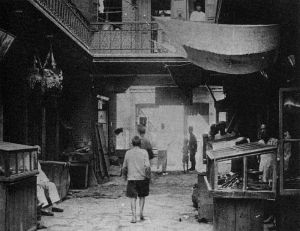
Millionka in 1922 with Chinese residents and shopkeepers
and a few pics from more recently….
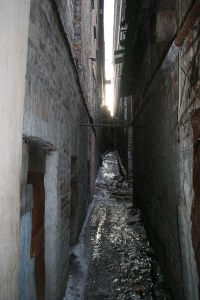
A typical Millionka alleyway…
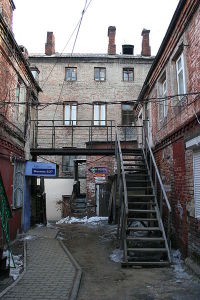
An inner courtyard in Millionka today not dissimilar to the one in 1922 above…
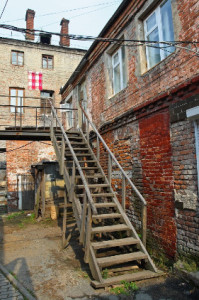 And another Millionka back court with original wooden stairs
And another Millionka back court with original wooden stairs
Posted: January 12th, 2015 | No Comments »
Five of the authors from the Penguin China WW1 series all on one stage at one time….!! And they said it could never happen!!
From Peking to Paris: China and the First World War

British forces arrive to fight alongside the Japanese at the Siege of Tsingtao, 1914
During the First World War, 95,000 Chinese farm labourers volunteered to leave their remote villages and work for Britain. They were labelled “the forgotten of the forgottenâ€, as their stories failed to form part of the public record on the War. This is just one example of many of the lesser known stories relating to China and the Great War. But these stories are now starting to be addressed.
To mark the centenary of the First World War, Penguin China has published a series of short histories on the economic and social costs it brought to China and the Chinese. Each book – written by a leading expert in the field – tells a fascinating tale which will fill the gaps of your China and WWI knowledge, including the only land battle in East Asia fought by Japan and Britain against the German concession in Shandong.
Asia House is pleased to host a panel with several of these authors, who will all talk on their chosen subjects.
Speakers include:
Best-selling author and historian Paul French, the chair of the panel (Betrayal in Paris: How the Treaty of Versailles Led to China’s Long Revolution)
Journalist, best-selling author and China analyst Jonathan Fenby (The Siege of Tsingtao)
Senior Lecturer in English Literature and Cultural Studies, Dr Anne Witchard, from the University of Westminster (England’s Yellow Peril: Sinophobia and the Great War)
Professor of History at University of Bristol, Robert Bickers, (Getting Stuck in For Shanghai: Putting the Kibosh on the Kaiser from the Bund)
Curator of Chinese collections at the British Library, Frances Wood (Picnics Prohibited: Diploma in a Chaotic China during the First World War)
Join us to hear the fascinating and all too often forgotten stories of the Great War.
A drinks reception will follow, with signed copies of the books available to purchase.
Details and booking form here

Posted: January 11th, 2015 | 2 Comments »
Frederick Gordon’s hotel group once owned some of the best hotel properties in London, across England’s resorts and on the continent. A self-made Brit, Gordon made a big deal about working to attract the American traveler to Europe and building hotels that appealed to them. However, his Gordon Hotel Group’s premier flagship property was The First Avenue in Holborn, which opened in 1883 and survived until 1940 when it was completely gutted and destroyed by the Luftwaffe in the Blitz (as ever, thanks Germany!!). The hotel’s name shows how keen Gordon was to attract American patronage – below is a picture of the exterior of the hotel from the First World War (thanks again Germany!!) showing the bunting with American flags.
However, maybe Gordon had a Chinese fascination going on – just check out the Chinese entrance hall of The First Avenue Hotel (in 1900) complete with moon gate, Chinese roof tiles and Qing Dynasty furniture. Never did a London hotel (or a Chinese one for that matter!!) have such a Chinese lobby!
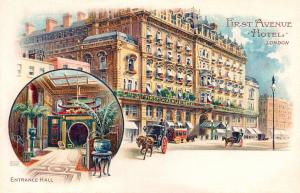
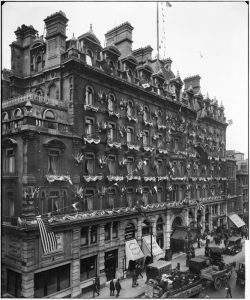
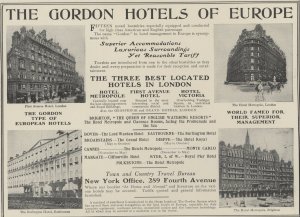
Posted: January 10th, 2015 | No Comments »
OK – a little Shanghai mystery I’d like to get to the bottom of – did Tony Kewsick, seen below, (fully Sir William Johnstone Keswick, 1903-1990 – they say it kind of like “Kezzick”), Shanghai taipan of Jardine Matheson from 1935-1941, Chairman of the Shanghai Municipal Council just before the Japanese invasion and head of SOE for the Far East during WW2 actually ever own and drive (or be driven) around Shanghai in a bulletproof limousine formerly owned by Al Capone? It’s a great tale but I’m just not sure. Certainly Keswick needed a bulletproof limo – in January 1941 Keswick was shot twice by an aggrieved Japanese ratepayer. Keswick’s wounds, one to the left side of his chest and the other to his left forearm, were not considered serious, with doctors commenting that his heavy coat had probably saved his life.

And so to the tale – it appears un-footnoted in a couple of publications. Ashley Jackson, in his 2006 book The British Empire and the Second World War claims that, after the 1941 shooting ‘Keswick drove around in a bulletproof car once owned by Al Capone.’ The tale is retold in Leroy Thompson’s 2012 The World’s First SWAT Team – WE Fairbairn and the Shanghai Municipal Police.Â
Now it could be possible – we are probably talking about Capone’s 1928 V-8 Cadillac Sedan (below) which has sparked many a rumour including that FDR rode around in it at the time of Pearl Harbor (disproved). Funnily enough this car came up for auction in 2012 with a provenance attached. Sadly there is no mention of Keswick buying the car and shipping it to Sjhanghai for his personal use. That provenance has the car’s history noted as ‘well-known and heavily documented. ‘
“After being shipped to New York and shipped to England, it was displayed at the Southend-On-Sea amusement park and later at the Blackpool Fun Fair. Dance hall owner Tony Stuart purchased the car for $510 at an auction in February of 1958 and sold it months later to Harley Nielson, a businessman and car enthusiast from Todmorden, Ontario. Neilson undertook a comprehensive restoration, and in the process, most of the heavy armor plating was removed, but other features, including the bulletproof glass and drop-down rear window, were retained. In a Letter to the Editor of Esquire, Neilson explained that in 1939, the U.S. government asked the British government to intervene and take the car off display because of the “poor public relations it could cause by pointing up American Gangsterism.†”
No record whatsoever of the car going to Shanghai
So, either a) the authors above are wrong; b) we’re talking about another car once owned by Capone that appears to have never been commented on much
Any leads much appreciated? Until then it appears to be a great tale, but sadly not a true tale!

Posted: January 9th, 2015 | No Comments »
A few China books out in the first half of 2015 that grabbed my attention….

Flood of Fire – Amitav Ghosh – Book 3 of the Sea of Poppies Trilogy & the opium wars approach….
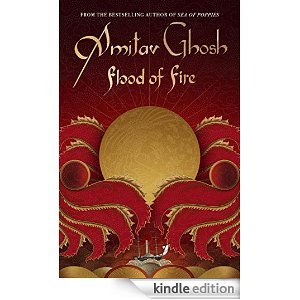
Manchu Princess, Japanese Spy: The Story of Kawashima Yoshiko, the Cross-Dressing Spy Who Commanded Her Own Army – Phyllis Birnbaum – a story well known to many China Rhymers I expect, but worth telling again and there just aren’t enough China books that include cross dressing characters (despite my attempts to up the number from zero to one)…
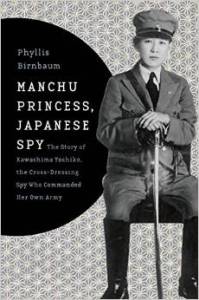
The Porcelain Thief – Huan Hsu – remarkable story of a collection of porcelain saved both from the Japanese invaders and the Communist philistines….
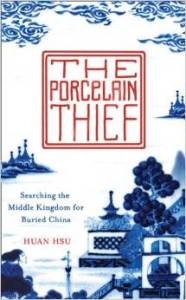
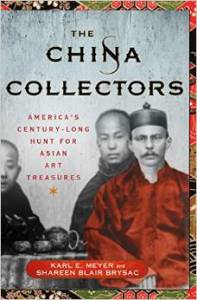
and finally….but then on second thoughts perhaps not!…
